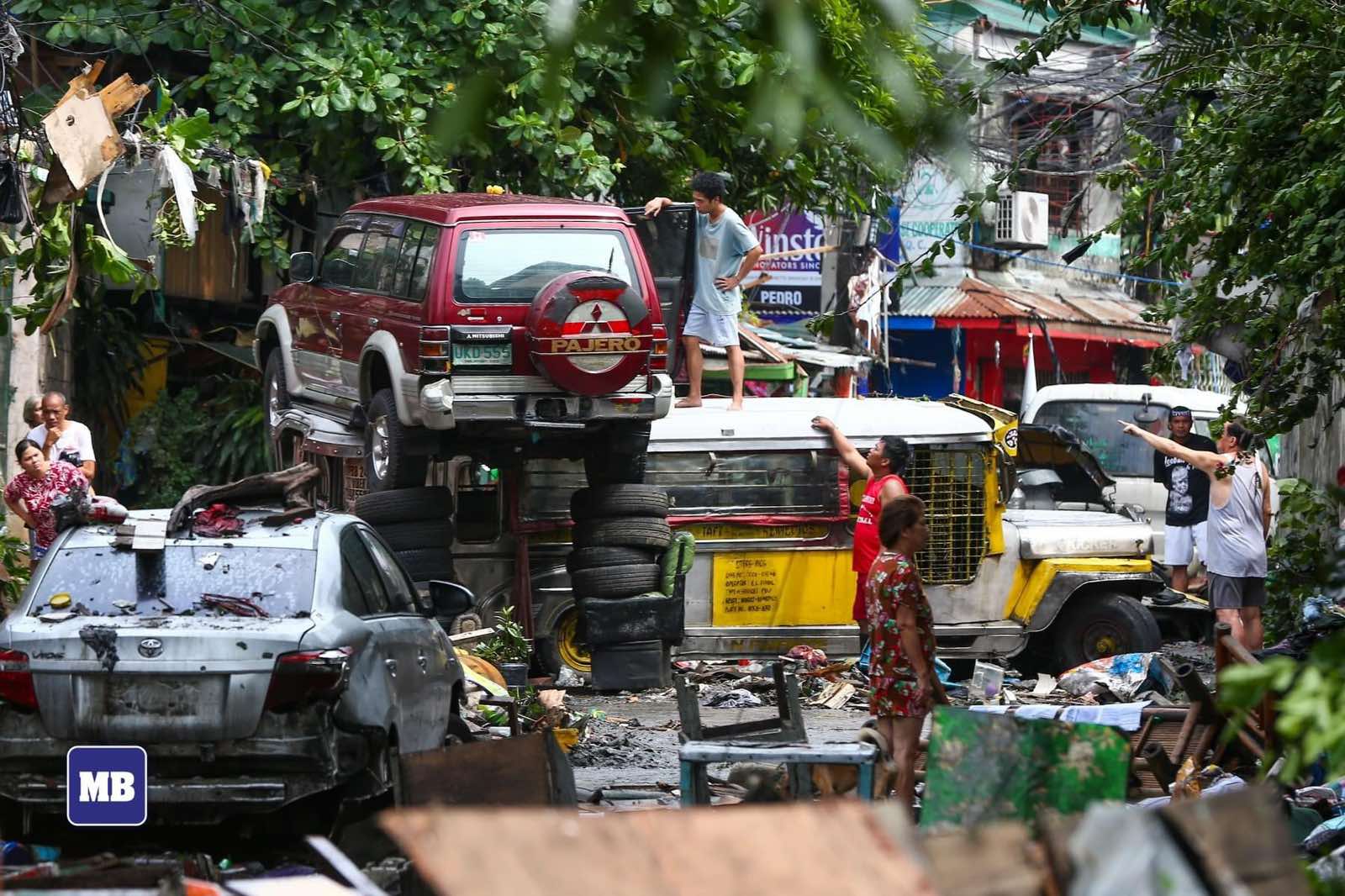Camanava hardest hit by Carina in NCR; more Luzon areas under state of calamity—spox
The Camanava area and Marikina are the hardest hit by Typhoon Carina in the National Capital Region (NCR), while more areas in Luzon are expected to declare a state of calamity, the Presidential Communications Office (PCO) said on Thursday, July 25.

A Sports Utility Vehicle (SUV) is seen on top of a passenger jeepney in Brgy. Del Monte in Quezon City on Thursday, July 25, 2024, a day after it was swept away by heavy floods caused by strong rains from Super Typhoon Carina and the enhanced southwest monsoon. (Noel Pabalate/MANILA BULLETIN)
Assistant Secretary Joey Villarama, PCO spokesperson for natural calamities and disasters, gave an update during the Bagong Pilipinas Ngayon briefing on the government’s efforts in the aftermath of Typhoon Carina and the enhanced southwest monsoon.
Quoting San Juan Mayor Francis Zamora, also the president of the Metro Manila Council (MMC), the PCO official reported that Camanava (Caloocan, Malabon, Navotas, and Valenzuela) and Marikina are the hardest hit areas in NCR.
As for the cities and provinces that already declared a state of calamity, Villarama enumerated two provinces—Cavite and Batangas—from Calabarzon, two provinces—Bulacan and Bataan—from Central Luzon and the entire NCR.
The official also raised the possibility of the whole Region III being put under a state of calamity.
“Pero, I understand Region III nag-usap po ang mga gobernador ng iba pang probinsiya (But I understand in Region III, the governors of the provinces)—seven and then two of the highly-urbanized cities in the region. May possibility po, hinihintay po natin talaga iyong declaration na iyong Region III ay magdeklara po ng state of calamity; mayroon din pong isa sa Oriental Mindoro (There’s a possibility, we are just waiting for a declaration that Region III will declare a state of calamity; Oriental Mindoro is another one),” he said.
The Department of Interior and Local Government (DILG) has also tagged the following municipalities as “hard-hit areas” with immediate needs: Abucay, Baliwag, Obando, Plaridel, Pulilan, and Sta. Maria in Region III; Cainta, Taytay, San Mateo, Morong, Rodriguez, Angono, and Tingloy in Region IV.
“The data is still coming in. Towards the end of the day, maa-update po iyang figure na iyan (that figure will get updated),” Villarama said.
A state of calamity is declared depending on the number of deaths or casualties, the extent of destruction to properties and infrastructure, disruption of businesses and livelihood, and the inability of people to continue with their normal way of life.
It also gives provinces and cities access to additional funds and imposes a price freeze on basic goods.
“Bakit po mahalaga iyong pagdeklara ng state of calamity? Again, kasi baka sabihin declaration lang iyon, for what? So, doon po maa-access iyong much needed calamity fund (Why is a declaration of state of calamity important? Again, some might say it’s just a declaration, for what? So, that will give access to much needed calamity fund),” the official added.
The National Disaster Risk Reduction and Management Council (NDRRMC) on Thursday said that there were at least 14 dead, two injured and two missing. Among the deaths, six are still being validated.